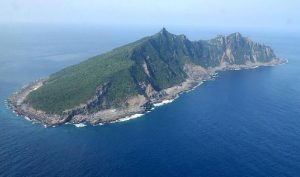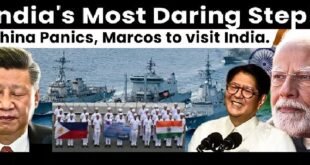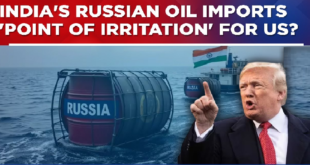29-04-2023
MANILA/ BEIJING: A Chinese Coast Guard ship blocked a Philippine patrol vessel in the South China Sea, causing a near collision in waters where Beijing’s vast claims have alarmed the US and its allies.
Media witnessed the tense encounter near Second Thomas Shoal in the remote Spratly archipelago last Sunday,  a move that Manila says is straight out of Beijing’s playbook. And it happened the day after Philippines’ President Ferdinand Marcos Jr met Chinese Foreign Minister Qin Gang in Manila, and expressed hope for open communication lines on the South China Sea dispute.
a move that Manila says is straight out of Beijing’s playbook. And it happened the day after Philippines’ President Ferdinand Marcos Jr met Chinese Foreign Minister Qin Gang in Manila, and expressed hope for open communication lines on the South China Sea dispute.
Throughout the 1,670km (1,038-mile) journey of two Philippine Coast Guard ships over six days, news cameras captured how on cue and in specific locations – Chinese ships would shadow or tail the Filipinos, and send them radio warnings to leave or face “consequences”. The Philippine Coast Guard said it had invited journalists to join their routine patrol in the hotly-contested waters for the first time to witness China’s actions for themselves.
China claims almost the entire South China Sea, including the Spratlys, which is also claimed in part by the Philippines. There are also competing claims by Malaysia, Vietnam, Brunei and Taiwan.
This has turned the South China Sea into one of the world’s biggest flashpoints, especially as US-China tensions have soared. For one, access to these waters is key to defending Taiwan at a time when China’s claims over the  self-governed island have intensified. And second, the waterways also host $5tn (£4tn) of global trade every year, raising concerns that Beijing’s increasing footprint could restrict commerce but China has ignored an international arbitration court’s ruling that its claim to almost the entire South China Sea is ill-founded. It has instead built artificial islands over reefs, heightened patrols, and more recently, shone lasers at Philippine ships to obstruct their view.
self-governed island have intensified. And second, the waterways also host $5tn (£4tn) of global trade every year, raising concerns that Beijing’s increasing footprint could restrict commerce but China has ignored an international arbitration court’s ruling that its claim to almost the entire South China Sea is ill-founded. It has instead built artificial islands over reefs, heightened patrols, and more recently, shone lasers at Philippine ships to obstruct their view.
The Philippines, on the other hand, has leaned on its long-standing ally, the US, which brands China’s moves as disruptive of other countries’ “freedom of navigation”.
When the stand-off happened, the US and the Philippines were in the final days of their largest ever war games. This came on the heels of the US gaining access to key Philippine military bases, many of which face Taiwan. (Int’l News Desk)
 Pressmediaofindia
Pressmediaofindia




